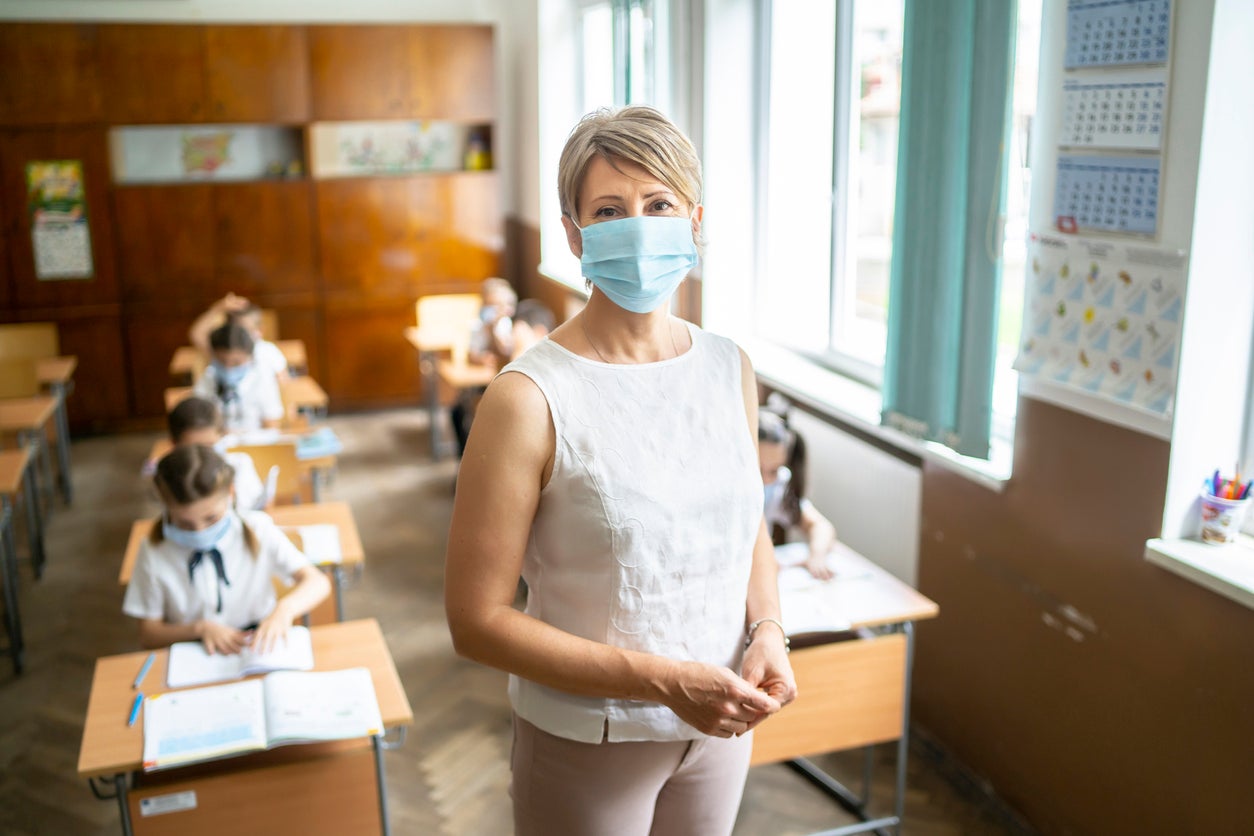The government fails to protect shielders in back to work advice
Those who can’t work from home must go in, but not all employers will take extra precautions with vulnerable staff


Your support helps us to tell the story
From reproductive rights to climate change to Big Tech, The Independent is on the ground when the story is developing. Whether it's investigating the financials of Elon Musk's pro-Trump PAC or producing our latest documentary, 'The A Word', which shines a light on the American women fighting for reproductive rights, we know how important it is to parse out the facts from the messaging.
At such a critical moment in US history, we need reporters on the ground. Your donation allows us to keep sending journalists to speak to both sides of the story.
The Independent is trusted by Americans across the entire political spectrum. And unlike many other quality news outlets, we choose not to lock Americans out of our reporting and analysis with paywalls. We believe quality journalism should be available to everyone, paid for by those who can afford it.
Your support makes all the difference.It’s rather appropriate that shielding officially comes to an end on April Fool’s Day (1 April).
The foolishness in the way this outwardly sensible scheme, set up with the laudable aim of keeping the most clinically at-risk people clear of coronavirus, has operated is one of the great under-reported stories of the pandemic.
For example, I’ve written before about the fact that there’s long been clear evidence of the very high risk posed by the virus to people with diabetes, and in particular, to those with type 1 auto-immune diabetes such as myself. The condition has been linked to a third of Covid-19 related deaths. Despite this, I and people like me were only added to the list a few weeks ago. In my case, this was two weeks after I’d had my first AstraZeneca shot. Stable doors, horses, bolting, etc.
Being put on the shielding list changed precisely nothing for me because I’ve basically been following the shielding advice throughout lockdown. A repeat encounter with a virus that hit me like a jackhammer to the head 12 months ago is not something I care for.
But I’m in the fortunate position of being able to work from home. What about those who aren’t? That’s where things get complicated, and potentially disturbing.
The letters, sent to all 3.79 million of us on the list by the Department of Health and Social Care and Ministry of Housing, Communities and Local Government, say the scheme is being “paused” because more than nine in ten shielders have had at least one jab.
In the government’s announcement, Dr Jenny Harries, the deputy chief medical officer for England, also noted that the prevalence of the virus has decreased. She further recognised “how difficult this period has been for so many and the impact it has had on people’s wellbeing”.
The latter point is a fair one. There are people who’ve been on the list from the outset who might see 1 April not as a fool’s day but as freedom day.
But that doesn’t excuse the flaws – and you could say the foolishness – evident in the new advice we’ve all received.
We’ve obviously been told to continue to obey the existing national restrictions and, well, duh.
But wait, there’s more. “We still recommend that you take extra precautions to protect yourself while the virus is still spreading in our communities.”
OK. What sort of extra precautions would they be?
The letter is rather vague on this point other than to say keep social interactions down and avoid hanging around in places where you can’t maintain social distancing. Which remains good advice for everyone.
This brings us back to the subject of work. Shielders who can’t do that from home are now being told to go in, which could include going into places where distancing is difficult to maintain and social interactions are common. Schools would be a good example. They’re places where shielders can’t possibly take the recommended extra precautions.
But wait, there’s this: “Your employer is required to take steps to reduce the risk of exposure to Covid-19 in the workplace and should be able to explain to you the measures they have put in place to keep you safe at work.”
Read more:
Phew! Except that’s not as good as it might look. It’s fine for those with conscientious employers who genuinely want to keep their staff safe. Some of them will take extra precautions with vulnerable employees, or maybe give them the option of going on furlough.
But not all employers are conscientious. The survey data I’ve been seeing shows that a worryingly high number of them are anything but.
If you’re shielding and your boss is one of the bad ones, you’re going to be left hoping the vaccine you’ve had lives up to the hype.
The data does suggest they’re all pretty damn good. None of the people in the AstraZeneca trials ended up in hospital, for example. But it’s also worth noting that previous shielding advice still urged people to carry on doing so even after they’d had two doses.
Small wonder when you consider the plight of some of the people in the shielding group. Consider those who are immunocompromised. The degree of protection offered to them isn’t yet clear, although a study is underway.
There is also a small group of people who can’t receive the vaccine.
Disability Rights UK head of policy Fazilet Hadi has voiced concerns about these people being left without the support that’s been available up until now, who will soon have no right to insist upon home working.
In failing both to properly consider these groups, and to mark the cards of shielders’ employers more firmly, health secretary Matt Hancock and communities secretary Robert Jenrick, who signed the letter, will be throwing at least some of us to the wolves.
Does that make them fools? Or is it that they’re just callous? It’s hard to say. But it’s unacceptable, when lives are at risk, to simply presume employers will do the right thing.
Join our commenting forum
Join thought-provoking conversations, follow other Independent readers and see their replies
Comments